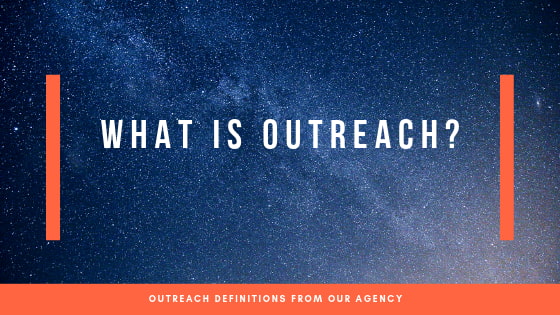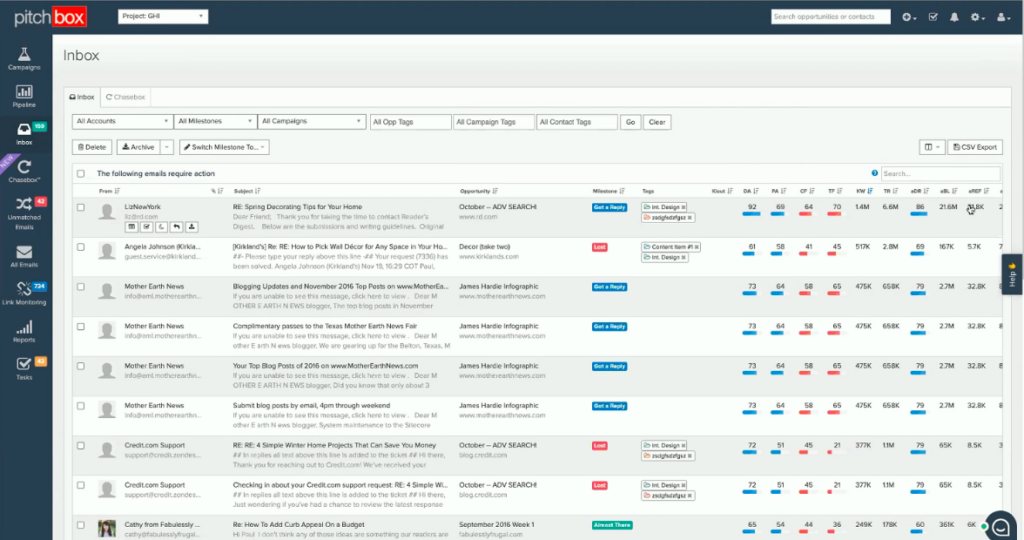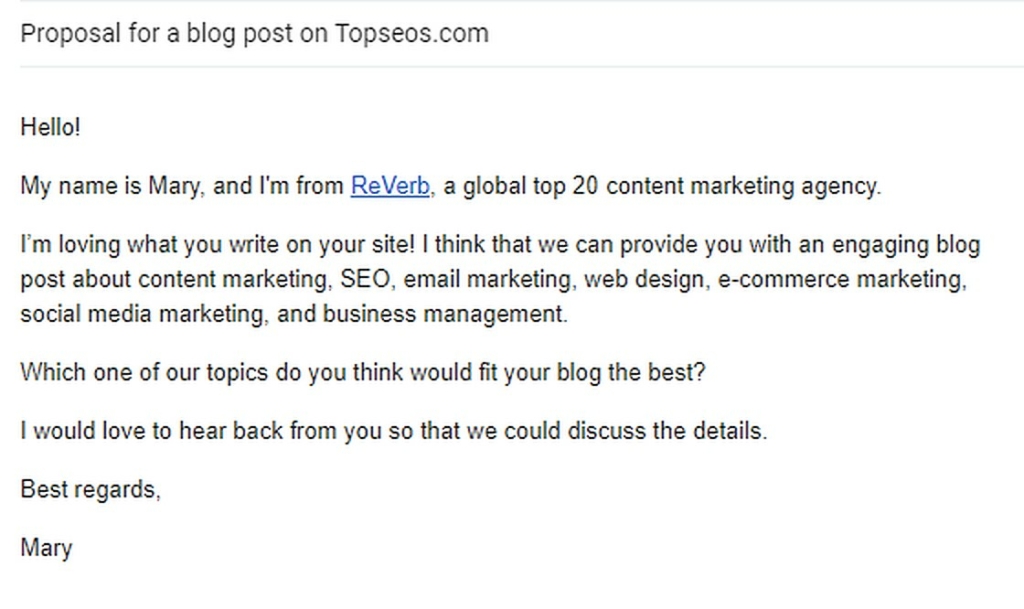
Is outreach still relevant in the evolving world of SEO? As Google’s algorithms mutate and the organic growth goalposts continue to shift, it remains vital that brands adopt an effective SEO outreach strategy to bolster their backlink network and enhance their online visibility.
But SEO outreach is admittedly a hazy concept, and as a strategy, its merits continue to be debated within the SEO community. To shed some light on exactly what outreach is, how it works, and why it’s important, let Seeker break it down for you.
What is outreach for SEO?
SEO outreach is a method used in link building. Its ultimate objective is to build backlinks to a website to increase organic visibility and boost domain authority in the eyes of search engines like Google. The outreach process involves discovering and pitching to relevant websites and creating valuable onsite content that includes a backlink to your own site.
The desired outcome of these outreach efforts is to generate high-quality, industry-relevant backlinks from trustworthy sources; as you successfully pitch for and acquire links, over time your backlink profile will grow, enabling your website to attract broad audiences, drive qualified traffic, and ultimately generate more online revenue for the business.

To get a better grip on the idea, we asked our MD and link building advocate, Gareth Simpson, what outreach means to him:
“In its most simple form, outreach is about building relationships through communication to get a link through value exchange. I often refer to outreach as ‘permission’ link-building.
In the old days of SEO, you could just submit a link to a directory. But this form of submission link-building doesn’t necessarily add value. With permission link-building, on the other hand, you have to win someone over and persuade them to provide a link.
Every link needs a story behind it because, for me, the link is the reward but not the objective. The link is a validation of something else that’s going on: an event, a collaboration, a personal recommendation, and so on.
Google states that links intended to manipulate a site’s ranking violate its guidelines. But outreach creates links that do more than just improve rankings. It’s content marketing, creating value that benefits everyone.”
Gareth Simpson, Managing Director
As Gareth illustrates here, at its heart, SEO outreach is about connecting with valuable contacts, building and nurturing relationships, and ultimately generating high-value links through effective prospecting, pitching, and content creation.
Why is outreach important in an SEO strategy?
Backlinks remain one of the most important ranking factors for search engines such as Google, and therefore link acquisition plays a key role in driving organic visibility and website traffic. Outreach is a vital aspect of link building, enabling website owners to build important connections, discover valuable link building opportunities, and enhance their website’s backlink profile.
A strong backlink profile — including relevant, authoritative links from trusted sources — enhances a website’s rankings on search engine results pages (SERPs), driving qualified organic referral traffic. But outreach is also about improving a business’s credibility and strengthening brand awareness; getting your business seen on respected, industry-renowned websites imbues it with credibility and boosts its branding.
Moreover, as the Google search algorithm has evolved, the search engine has become more adept at detecting link building practices that violate its guidelines. Private blog networks, link exchanges, advertorials — these “black hat” SEO practices are readily discovered and penalised, meaning brands building links this way will lose traffic, credibility, and ultimately sales.
Outreach (or “permission” link building), however, can generate valuable links without violating Google policies. And in response to Google’s increasing clamp-down on unethical link building tactics, more and more SEO agencies have expanded their strategies into outreach. A side effect of this being: supply of content outstrips demand.
Publishers likely receive hundreds of emails a day from agencies requesting they publish and promote their content. As a result, a successful SEO outreach campaign becomes less by-the-numbers and far more nuanced, requiring strong negotiation and interpersonal skills as well as the ability to deliver engaging, relevant content.
What does the SEO outreach process involve?
Outreach is a link building strategy that ultimately aims to improve organic rankings by acquiring high-quality backlinks. As any SEO outreach specialist will attest, however, successful outreach involves a broad range of methods aimed at earning backlinks to websites and web pages — such as prospecting, pitching, and negotiating with link prospects.
Before you begin your SEO outreach campaign, it’s important to understand where to focus your link building efforts — building links is the overall objective of an outreach strategy, after all. As you search for link building opportunities, communicate with prospects, and create link-focused content, keep in mind these 3 key principles:
Target relevant, trusted, authoritative websites
Not all websites and web pages are created equal. Search engines use a huge range of factors to determine search results, but the three pillars of ranking are trust, authority, and relevance. By targeting relevant, high-authority, trustworthy websites in your outreach, your own website will gradually build a reputation as a credible source of information.
- Trust: content is one of the most important ways search engines determine whether a website is trustworthy.
- Authority: backlinks are vital to determining the perceived authority of web pages and sites.
- Relevance: the quality of links is a key factor in determining a website’s relevance to a target audience.
Aim to earn followed links
There are two types of links you can earn — follow and no follow — and these tell search engines what to do with their link equity. A ‘dofollow’ link instructs search engines to pass SEO value from one page to the other, while a ‘nofollow’ link passes no equity between pages, with search engines not considering the link for ranking purposes.
When outreaching to target websites, you should aim to earn ‘dofollow’ links, so that the pages you’re linking to earn maximum value in the eyes of search engines.
Use descriptive and relevant anchor text
Anchor text is the copy users click on to open your links, effectively acting as a call to action (CTA). But it’s also a way of telling search engines what the page behind the link is about.
To get the most from your anchor text, it should be relevant, descriptive, and strategically aligned with the target page’s content and keywords. So if your link is routed to a page about SEO outreach services, for example, use an anchor that relates to this.

Image: Pixabay
How to run an SEO outreach campaign
The best SEO outreach campaigns are precisely targeted, personally relevant, and designed to be repeatable.
There are five stages you must follow to ensure your campaigns meet these requirements:
- Prospecting: finding a relevant and authoritative website to publish your content.
- Pitching: reaching out to the site(s) you’ve found in your client’s niche.
- Writing: creating E.A.T. informed copy with expert link placement and anchor text.
- Negotiation: building relationships to get your content published with the link(s) intact.
- Analysis: assessing how your link has performed against your SEO outreach campaign KPIs
Let’s look at the outreach process from start to finish.
1. Prospecting
First, we need to identify publisher websites to post our content on. This process is known as prospecting.
There are myriad ways to do this, but the most popular is through the use of dedicated prospecting tools. Seeker uses Pitchbox, but there are lots of other useful applications you can use.
Prospecting involves identifying websites that are 1) reliable, and 2) relevant. Not every website is worth your time.
Collating a prospect list requires the following information:
- Publisher name
- Contact name
- Email address
- Job title
- Social media profiles
But what makes a good prospect? Well, that’s determined by a number of factors. Here are a few things to look out for:
- Relevance. A good prospect is one that is relevant to your client and the page you’re planning to link to.
- Popularity. Your prospect should ideally have high traffic, a significant social media following, and a number of good backlinks.
- Trustworthiness. Does Google trust your prospect? Look for a site with an established domain, strong UX, and high-quality content.
- Link practices. Is your prospect part of a link farm? Look out for excessive or irrelevant outbound links, as this indicates a risky prospect.
- Domain Authority (DA). DA is a search engine ranking score that indicates whether a domain carries authority, based on a range of factors.
- Page Authority (PA). Similar to DA, this metric measures the authority of specific pages rather than an entire domain.
- Citation flow. This is the number of backlinks leading to a domain. The more you have, the better Google will rank the prospect.
- Trust flow. This relates to the quality of the prospect’s backlinks. Better quality links (as determined by Google) mean a better quality prospect.
- Link ratio. Assess the ratio of overall links to high-quality links. If a prospect site has lots of links but they’re mostly of questionable quality, it might be ranked lower by Google.

Image: G2
2. Pitching
Now you’ve identified the website(s) you want to outreach to, it’s time to pitch your content ideas to them. This is where your creative and interpersonal skills come into play. It’s important to remember that you are outreaching to people, not businesses.
When pitching to prospects, remember that a strong outreach email has the following features:
- A strong subject line: getting your prospect to open your email is crucial, of course, and this requires a concise, action-orientated subject line.
- Personalisation: a personalised email is key to the outreach process. Generic automated emails lack a human feel, and will likely put prospects off your pitch.
- Brevity: publishers receive hundreds of emails a day, and are often time-poor. Keep it short and to the point.
Prospects will likely have to sift through dozens, hundreds, and even thousands of outreach requests a day. Consequently, you need to create a tailored approach when conducting your outreach. Beyond considering what you need from the interaction, consider what your prospect needs, too.
Here are a few tactics you can employ in your outreach:
- Update an old post: find an outdated but well-performing post (e.g. an essential guide from 2020) and contact the publisher with the offer of a more relevant, updated piece.
- Fill a content gap: find a gap in a prospect’s content strategy and offer to fill it with your own content. Alternatively, find a topic that the prospect hasn’t covered in depth and offer the same.
- Offer an opposing viewpoint: good content sparks debate. Pitch the idea of an opinion piece that challenges popular attitudes or offers a unique perspective on a well-worn topic.
- Use current news and events in your pitch: identify a key recent event in your prospect/client’s industry and use it to pitch a relevant, up-to-the-minute news-style piece.
- Offer seasonal content: virtually every industry integrates seasonal content into its strategy. Pitch an idea based on a holiday or national event that relates to your prospect and your client.
Of course, there’s a multitude of possible tactics you can apply in order to create a compelling outreach pitch — far too many to list here. So, use the above as a jumping-off point, and craft your own, unique strategy as part of your overall outreach SEO campaign.

Image: ReVerb
3. Writing
Once you’ve won a pitch, the next step is to craft your content. This will normally take the form of guest posts, and your aim will be to strike a balance between aligning with your prospect’s existing content strategy and writing about your client’s respective niche — so it’s important to find a content angle and format that works for all parties.
You’ll be writing for your prospect’s site, remember — not your client — so it’s important to adhere to their editorial guidelines.
The type of content you write will ultimately be up to you, although your prospect and/or client should naturally have some say in this. Your client may prefer that you stick to a very specific topic, for example, while the prospect site may forbid content that relates to certain subject matter— they tend to be wary of gambling-related content, for instance.
Google’s E-E-A-T principles should be considered here, too. The overall theme of the piece has to be relevant to the client and anchor text in order to pass authority from the prospect site to your client’s website. These are some of the things to take into account to ensure your content is written with E-E-A-T in mind:
- Topical relevance: your title, sub headings, and copy should be relevant to the page you’re linking to, the anchor text you use, and the supporting keywords.
- Original content: your content should be 100% unique and offer something new. Content that is simply summarising already well-known information displays a lack of expertise and experience.
- Useful external links: make your content more helpful to the reader by including links to authoritative, non-competing sites/pages that match the search intent of your subject.
- Expert opinions: adding a unique quote from your client can increase the value of your content, especially where your client is a known expert in the field you’re writing about.
To illustrate this in practice, let’s say you want to link to a product page for an eco-friendly skincare product. In this scenario, a blog titled something like “How To Make Your Self-Care Routine More Sustainable” would work perfectly, since it’s topically relevant to the product and will enable you to comfortably insert a link to it into the article.

4. Negotiation
You’ve won the pitch, and crafted a piece of high-quality content. Now you need to nurture that relationship and persuade your prospect to accept your content — crucially, with the links intact.
Relationship management is critical during negotiation. If your prospect is wary of you, they’ll be wary of your linking practices, too. First off, check your prospect’s backlink guidelines before sending a piece of content over — if your link contravenes their requirements, they’ll strip the link or simply refuse to publish your content.
It’s also important to ensure your link is relevant and well-placed within the piece, of course — so as to appear professional and genuine — but the real key is cultivating your relationship with the prospect through personal communication. If you send your content to your prospect with an obviously generic email, you may undo the hard work you’ve already put in.
If your prospect hasn’t gotten back to you, feel free to send them a chaser. With this in mind, it’s a good idea to have a process for chasing up prospects. For example:
- First chaser three days after submitting your content
- Second chaser one week after send your first
- Third chaser two weeks after your second one
The important thing is that you’re not rigid with your process, since you’ll need to adapt and pivot at times. Keep personalisation in mind by being mindful of your prospect’s circumstances, too — if your contact says they’re going to be away for a period of time, don’t hold this against them, but ask if there’s someone you can contact in their absence.
And be warned: if you sound needy or pushy, you’ll lose them. The prospect relationship is a delicate one, so tread softly.

5. Analysis
Once you’ve persuaded your prospect to accept your content with links intact, you’ll need to evaluate that link’s performance, both as an individual link and in the context of your wider outreach strategy.
Ongoing analysis of your SEO outreach strategy is crucial, since it will enable you to uncover potential deficiencies in your approach and identify areas for improvement. It can also help you ensure you’re focusing your outreach efforts on the right areas and targeting the right types of prospects, rather than spending time on futile endeavours.
There are several factors you should consider when you’re analysing your outreach campaigns:
- Volume of backlinks: how many links has your campaign created? Be sure to identify direct links (from the prospect) and indirect links (from third-party sites that reproduce your content).
- Social shares: the more social shares a piece of content gets, the more people it reaches (which in turn creates indirect backlinks).
- Pitch to placement ratio: this relates to the number of actual placements you receive compared to the number of pitches sent out. If you send out hundreds of pitches but receive only a dozen placements, your outreach strategy may need a rethink.
- Placement quality: assess the quality of your placements, checking factors such as Domain Authority. If the only placements you get are with low-quality prospects, the SEO impact of these links will be low.
- Keyword performance: the pages your content links to are associated with specific keywords. When you create these links, these pages should rank higher organically for these keywords.
It’s vital that you assess the quality of any SEO campaign, and not just upon its completion. Evaluate your efforts on a frequent basis, addressing bottlenecks or flaws in your strategy early on and making tweaks where necessary.

Image: Pexels
How can AI augment your outreach efforts?
Leveraging AI in an SEO outreach strategy can significantly enhance efficiency and precision, driving meaningful engagement and ultimately boosting online visibility. AI technologies can be utilised to analyse vast amounts of data to uncover valuable insights into customer behaviours, preferences, and search patterns, which can inform a more personalised and targeted approach to outreach.
Here are just a few examples of how AI can be leveraged as part of an SEO outreach campaign:
Keyword research automation
Firstly, AI can automate and optimise keyword research, enabling you to identify the most relevant and potentially lucrative keywords and phrases to target when identifying prospects and creating content. Through predictive analytics, AI can anticipate emerging trends around client industries, which means you can create more focused and relevant outreach campaigns.
Content creation and optimisation
Moreover, AI can facilitate the creation of smart content that resonates with users. Generative AI tools, for example, can help with title ideation, blog post structure, and content evaluation, while AI-assisted transcription software can transcribe conversations and enable you to turn Q&A sessions or interviews into insightful blog posts and case studies.
Site and link identification
When it comes to link building, AI can help identify high-authority websites and influencers within a particular niche, improving the efficacy and scale of outreach initiatives. Additionally, AI can analyse backlink profiles to identify opportunities and vulnerabilities, ensuring a healthy and robust link profile.
Outreach campaign management
AI can also help streamline your outreach campaigns, employing advanced personalisation features to stimulate engagement and increase open and response rates. Additionally, your email campaigns can be automatically scheduled to go out during ideal sending times for each prospect.
Backlink monitoring
AI-powered tools can also be leveraged to help you analyse and keep track of your — and your competitors’ — backlinks. These tools provide comprehensive reports on your overall backlink profile, offering insights into how your backlinks are impacting your site’s traffic and rankings and helping you distinguish ‘good’ backlinks from ‘bad’.
Outreach and SEO are becoming ever more inextricable. The goalposts are moving for SEO outreach, and brands and agencies will need to work hard to source valuable backlinks on authoritative websites. It’s not impossible — but it’s challenging.
We hope this definition of outreach and its relationship with SEO has shown you why SEO outreach remains a valuable tactic for your business.
If you’re looking to build links and grow your organic traffic, get in touch with our team of outreach specialists to discover how we can help your business increase its online visibility.
SEO Outreach FAQs
Can my business do SEO outreach?
So long as it has a robust process for identifying the right links, placing them on external websites, and reviewing their performance, your business can perform SEO outreach. However, since it is a scientific link-building tactic that requires a tactical approach, many businesses opt to partner with an experienced SEO outreach agency.
Are outbound links good for SEO outreach?
Outbound links are an important part of SEO outreach. Including outbound links in your content helps search engines understand what the page is about. It also adds value to the page by pointing users to helpful resources that help satisfy their search intent. The key is to use outbound links that point to relevant and authoritative pages.
How many outbound links is too many for my content?
While outbound links can help increase topical relevance and authority, overloading your content with outbound links weakens the value of your own link. There’s no set convention on how many links is too many, but a good approach is to review your competitors and check the average number of links included in their content.
